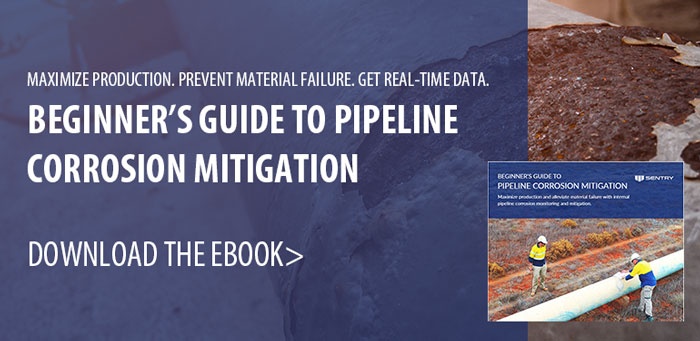
Corrosion monitoring and mitigation is essential for ensuring safe operation and reliable natural gas supplies. In fact, corrosion control practices could save up to $875 billion annually. And this doesn’t include the additional safety, operational and environmental benefits that come from corrosion-free equipment.
Corrosion Control with 5 Simple Steps
Chemical programs are the key to preventing corrosion in facilities producing, transporting and storing natural gas, gas liquids and crude oil. Chemicals help oil and gas facilities inhibit corrosion by coating assets and eliminating corrosive contaminates such as Hydrogen Sulfide and Carbon Dioxide. They can also keep hydrocarbons flowing from wells through thousands of miles of pipelines.
To avoid the financial, environmental and human costs of corrosion, it’s critical for oil and gas refineries to implement these simple corrosion-prevention chemical processes:
1. Identify Targets and Their Size
Chemical programs aim to reduce corrosion by targeting corrosion-causing contaminates such as hydrogen sulfide, carbon dioxide, etc. These same programs also coat the surfaces of equipment with corrosion inhibitors to reduce the metal’s exposure to contaminates. To prevent wasting these expensive chemicals, it’s necessary to accurately measure the contaminates.
However, the most common measurement method has an extremely high percentage of error. One component of this method involves a reaction that creates false high measurements of hydrogen sulfide (H2S) when exposed to a common chemical scavenger.
To make this assessment even more challenging, the level of contaminates seldom remain constant within most hydrocarbon production, transportation and storage facilities. Therefore, the method of measurement chosen, the location within the process system and the time of day the measurements are taken are all major factors.
2. Choose the Proper Chemicals
Choosing the correct chemicals helps you achieve an optimized program. Each chemical utilized in the program must be strategically applied to single-out and mitigate a particular contaminant or condition.
Chemical companies provide blends specific to the corrosion targets, target size and the condition of the process; such as the excessively dry or wet conditions in natural gas processes. Selecting the appropriate chemical blend is critical to addressing the specific needs of your plant and equipment.
3. Choose the Right Method of Dispersion and Distribution
Each chemical targets a particular contaminant within the process, but using the same method of dispersion and distribution for all chemicals is ill-advised. Improperly dispersing and distributing within the process flow causes these expensive chemicals to be wasted.
For example, a complete and thorough atomization is required for most chemicals used in a gas process. Yet for these same chemicals to be optimized in a liquid process, they should be dispersed and distributed with a mixing probe or quill.
4. Choose the Right Location
Improper chemical injection location is often the culprit in preventing an optimized program. The corrosion targets are often moving and/or changing size. Therefore, it’s critical to consider the proper methods and locations for dispersion and distribution of the chemicals.
5. Confirm the Target was Mitigated
How do you know your mission was successful without accurate measurement? Measurement methods and devices typically have ranges of accuracy and repeatability from 1%-25%. When measuring in the parts per million (PPM) or even parts per billion (PPB) ranges, the range inaccuracies can prove devastating to a process or asset.
With all these moving parts, are you willing to take a gamble? Learn how to ensure your upstream and midstream applications are meeting your goals.



